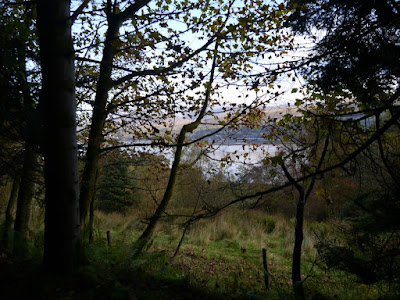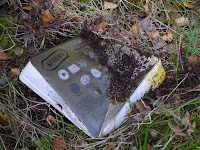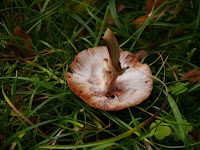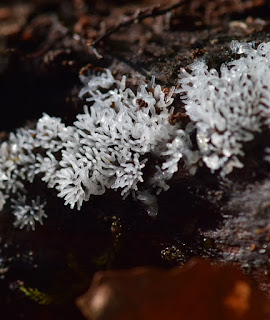Up hill, I have watched first the foxgloves, then young birches, and now replanted crop trees various growing all over the cleared area. There is a lot else too. Most of the plants and fungi in my garden have relatives in this wood.
On the birch trunk, the top one in the picture above, I found these little mushrooms growing in a crack in the bark. I don't know what they are yet and have left them there. I'll keep going to visit them for a while to see how they progress.
 |
| click on any photo to see it larger |
Its bark looks like this:
 |
| bark of a pine |
Further along I edged along a trunk similar to these on the right but stouter. It was just as well it was stouter and a good bridge because it spanned a small ravine. All the sticky up side shoots were actually quite useful to jam my boots against for steadiness. I wanted to get a closer look at this fungus on yet another fallen tree. I couldn't get any closer. Well... possibly... but I decided not to.
 |
| another not ID-ed fingus |
Down from my trunk treading, I then explored a marshy bit. It shows as a pond on some old maps but it's actually just a bog and the sides of the area are steep and skiddy, as I discovered. Scaly Male Ferns are very tough though and a big handful makes a useful rope for hanging on! In the marshy bit, I found the mushrooms shown below. I haven't managed to identify them yet either.
 |
| mushrooms in a marsh |
 |
| transluscent cap |
The tree from which this leaf comes has recently lost half its crown because of collapsing pines crashing through it. The leaves are a beautiful bright yellow-green in spring.
There's nothing like a bit of messy woodland for watching Life–and the deaths that help it along–doing its stuff.











































